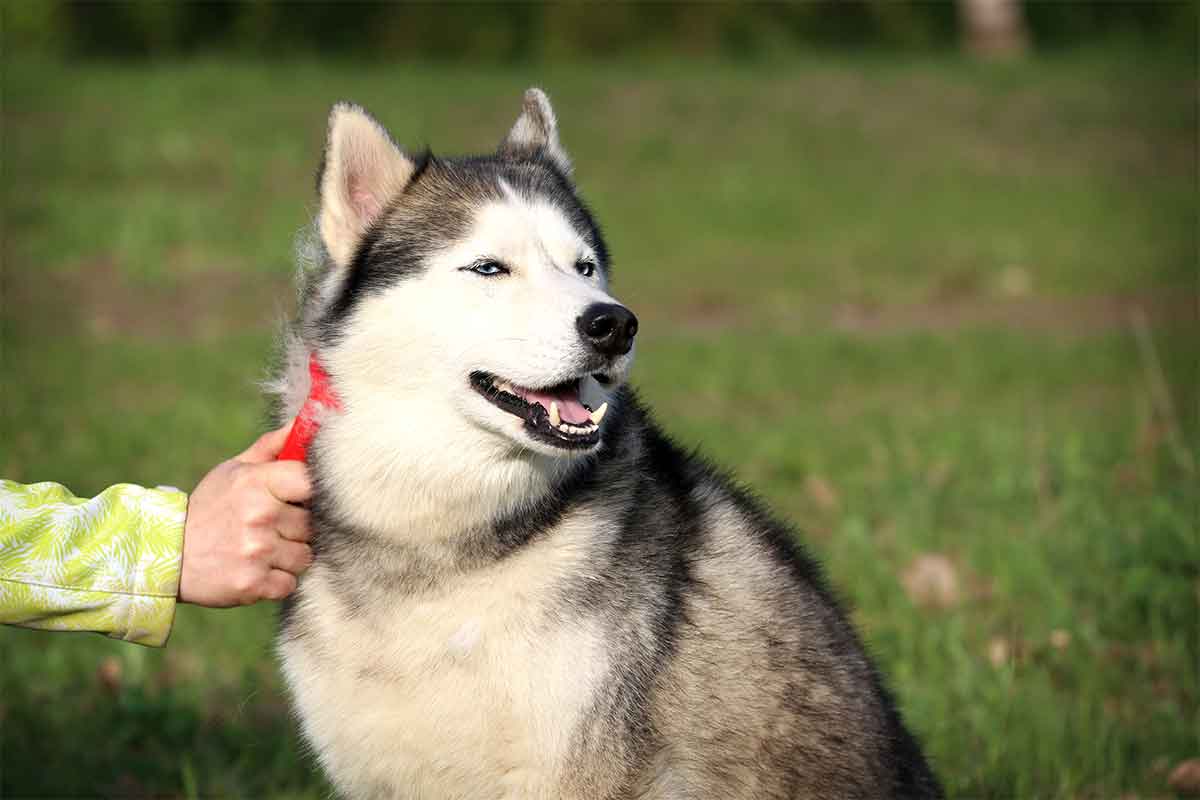When looking to adopt a puppy or dog, compatibility between you and this new four-legged member of your family should be paramount. Not looks or age. So, that explains why when I temperament tested Chipper and discovered we were a match, I overlooked the fact that I just adopted a super shedder.
Yep. Make that a capital H for hairy. Chipper would leave her hairy calling card everywhere. On my clothes. In my home. In my car. That’s because she was a blend of two of the hairiest dog breeds created: Siberian husky and golden retriever.
I share this because most dogs shed to some degree, and all dogs benefit from regular grooming sessions by a professional as well as by you in the home. These grooming sessions, when done in a patient, positive manner, will also deepen the bond of trust and friendship between you and your dog.
Dogs shed for many healthy – and unhealthy — reasons. The dog’s breed, health condition, as well as the season of the year will dictate the degree of shedding that occurs.
German Shepherds, Beagles, Border Collies, and Labrador Retrievers top the list of heavy year-round shedders. Breeds with thick undercoats such as Huskies, Corgis, Chow Chows, and Alaskan Malamutes sport reputations for “blowing their coats” – dumping excess hair, usually in spring and fall. Breeds such as Yorkshire Terriers and Poodles feature single coats with slow but steady-growing hair shafts that shed infrequently but require clipping. Afghan hounds have long, silky coats that don’t really shed but require frequent brushing and combing to keep the coat clean and mat-free.
Health issues, such as parasitic infestation (fleas, ticks or mites), ringworm, a poor diet, food or environmental allergies, certain cancers, skin infections (hot spots), hormonal diseases (such as hypothyroidism), or adrenal diseases (such as Cushing’s) can affect not only amount of shedding but also the quality of the dog’s coat.
Mats can develop that hold old hair hostage while preventing new healthy hair growth. The result can be painful, requiring matted hair to be carefully clipped, usually by a professional groomer, to prevent injury.
Teres Devine, head groomer at Animal America Pet Resort in Hurst, Texas, says stress and anxiety can also cause a dog to shed excessively. That’s why she invests the time and emotional energy to greet and handle each of her canine clients. Her goal is to put them at ease before making the first brush stroke on their coats.
“Depending on the size of the dog, I will sit on the floor and have them in my lap or sitting next to me,” she says. “People don’t always realize how stressful it can be for a dog to be out of his natural environment like the home and making his first visit to a groomer at a pet resort. I make it my job to make them feel safe and at ease.”
She recalls the shedding change that occurred in a Labrador Retriever she has been grooming for years. Suddenly, he was shedding in excess. It was not due to allergies, but from the stress of the family moving to a different home.
Inspect your dog’s coat regularly. Sniff the coat and run your fingers through the hair. Before brushing or bathing, look for signs of matted fur, flea bites, brittle or oily hair, and even injuries to the skin. Contact your veterinarian for appropriate treatments to improve skin and coat.
Take your time when brushing your dog as he can quickly tune in to your emotional state and level of patience. Add in some small tasty treats while brushing to help ensure it is an enjoyable experience for your dog. Devine advises thoroughly brushing the coat before bathing. Then allow the coat to dry before giving a post-bath brushing.
“Brushing a dog’s coat – once a day or at least every other day, helps make the coat nice and shiny and the hair not so dull,” she says. “Check with your veterinarian or groomer about selecting the right grooming tool to use on your dog’s type of coat.”
This article was reviewed/edited by board-certified veterinary behaviorist Dr. Kenneth Martin and/or veterinary technician specialist in behavior Debbie Martin, LVT.








